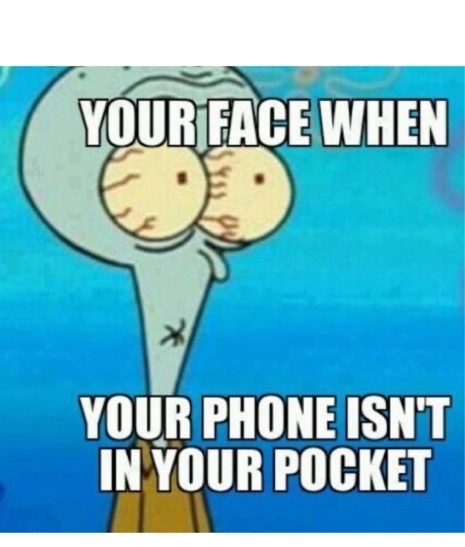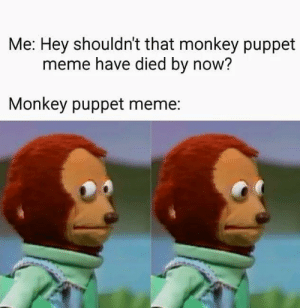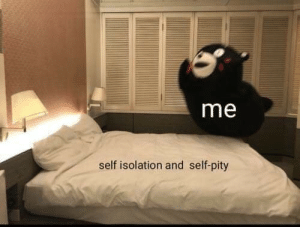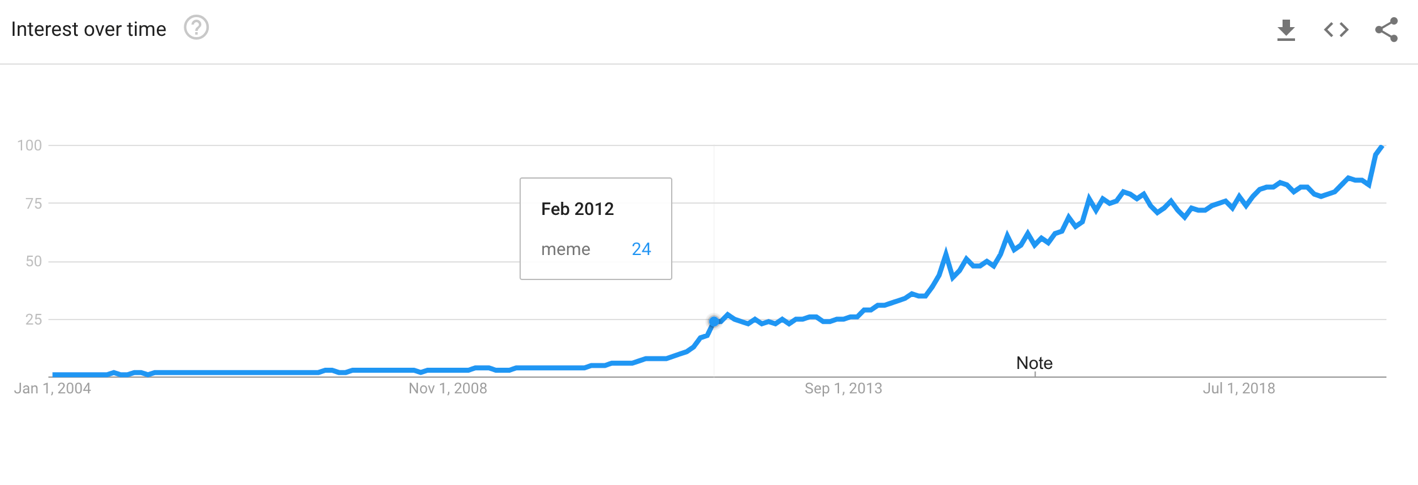Internet memes as a new means of communication on the web are of broad interest for several interdisciplinary studies. Philologists and anthropologists consider memes as a manifestation of folklore; psychologists are interested in the origins of the attractiveness of memes and their impact on human consciousness and journalists are trying to figure out how to create them. Since a meme has become an essential part of the Internet, there is a need for scientific reflection on this phenomenon, and hence in recent years, there have been works which were aimed at a meme.
However, it is important to add that the exhaustive characterisation of memes has not yet been presented due to its incomplete study and complexity. In turn, this leads to a number of significant hypotheses, the probability of which will be determined in this paper. First, memes are most likely to have a high degree of variability and semantic content. Second, it may follow that, due to their multifunctionality, memes may replace the usual communication format. This research project discusses the phenomenon of memes in terms of digital communication and describes their short history and role in maintaining interaction between users.
Literature Review
Currently, there is a lack of scientific knowledge in the academic world about the use of memes as a communication tool. In greater detail, the phenomenon of Internet memes is being explored in global network sources, while journal articles have a much more conservative view of them. Although the study of the new means of digital communication is relatively recent, most researchers agree that memes have become more prevalent in recent times. This may be due to their multifunctionality and variability.
Among the authors who have paid attention to memes, it is worth noting Hoey (2019), who stated the defining task of memes – the transmission of information. A significant contribution to the development of this issue was made by Yus (2018), who studied in detail the role of memes in digital communication. The critical result that the researcher came to was the ambiguity of the functions of Internet memes. On the one hand, memes certainly play a humorous role, but their other tasks also include the influence on the personality of the user. It is logical to suppose that this fact can be used for malicious purposes.
From this point of view, the Kulkarni (2017) research is of interest, stating that modern politicians do not neglect memes to promote their interests. It is not uncommon for innocent images found on a user’s news feed to be obscured by propaganda (Gutierrez, 2017). The most unobvious information described by Phillips and Milner (2019) shows the reader the dangerous nature of memes. Phillips and Milner (2019) argue that, in the pursuit of entertainment, authors can create posts that generate segregationist dislike and intolerance.
The comparative analysis of these scientific works reveals incomplete knowledge. Each author tries to focus on a specific issue, and for this reason, there is no general understanding of this digital communication tool. Despite the real concern about the misuse of memes for political purposes, memes can replace the traditional way of communication because they possess the full range of qualities necessary for speech.
Brief History of Memes
Surprisingly, many experts have been researching memes as a phenomenon in communication since the 1970s. In 1976, English science populariser, Richard Dawkins, published The Selfish Gene book, which marked the formation of a potentially new science of meme research (Saberon, Marilao, Marcellones, & Zabala, 2019). Memetics, the field of knowledge dedicated to the study of memes, originated from the concept of transferring Darwin’s theory of evolution to human culture. Dawkins’ follower, Blackmore (2016), believed that humans were meme machines and their head was a repository of information codes. With this, Blackmore explained a relatively large size of the human brain.
According to Blackmore (2016), if a gene is the first replicator of evolution, then a meme is the second. As well as genes, memes are replicators which aspire to the maximum spreading of themselves, and, consequently, they are parasites or viruses for their carriers (Blackmore, 2016). A new stage in the development of memetics began with the work of the American publicist Douglas Rushkoff, who used the concept of memes in media space research. Rushkoff called memes the information virus of obscure origin (Kuznetsov & Slavina, 2018). Such “infections” have an indirect or direct impact on society by manipulating public opinion. Modern researchers use the concept of a meme to a greater extent not as an abstract unit of information knowledge, but as a specific aspect of Internet culture.
Internet Meme Definition
One of the critical problems associated with the phenomenon of Internet meme is the diversity and heterogeneity of definitions of “meme”, which differ from source to source. In the most general sense, a meme can be described as the information object that has gained popularity, usually spontaneously, in an environment served by information technology (Milner, 2016). Most Internet users encounter memes daily while working on social networking sites or flipping through news feeds.

Nonetheless, memes did not take on the task of acting as units of transmission of any culture and soon began to be associated with a phrase, image or video, which is widespread and rapidly flowing on the Internet. At the same time, memes are similar to the original meaning of the principles of heredity, variability and selection (Milner, 2016).
The key feature that distinguishes a meme from any other signs or symbols distributed on the network is the structural variability that has become available through computer technology and the Internet. This feature can be considered from both sides. First, like speech, a meme has undergone evolutionary changes throughout its use: it has become lighter and more convenient, getting rid of unnecessary forms (Love & Wimsatt, 2019). For example, figures 2 and 3 present two seemingly similar images. However, figure 2 shows a typical meme image of 2012 – there was the responsible approach, quality and precise work. Figure 3 shows an entirely different way of creating memes – poor quality, fast and as absurd as possible.


On the other hand, the changing structure of memes throughout their existence resembles the world-famous children’s game Chinese whispers. The source code passed through word of mouth is modified, resulting in something new (figures 4 and 5). Memes are social, and they are created for mass viewing and exchange; therefore, they exist for as long as they are transmitted (Love & Wimsatt, 2019). The meaning that a meme carries is also constructed socially, in the process of applying it to a description of the surrounding reality or shared past (Hoey, 2019). Application is reconstructed and deepened with each new format, however, maintaining an absolute continuity.


Function of Memes
The completeness of variations makes a meme a multifunctional and versatile medium for information transfer. Hence, the primary function of memes, according to initial ideas, is the transfer of information from one person to another (Milner, 2016). The defining function is filling the vacuum existing in the media space with information (Kuznetsov & Slavina, 2018). In particular, memes represent opinions and express ideas: thus, memetics is not limited only to communicative functions but also play an emotional role. From this point of view, it should be understood that the sensual subtext of Internet memes is aimed at both the consumer and the creator.
First, memes, regardless of the presented format, allow an individual to relieve the existing emotional pressure. Supporting and encouraging text and a funny image allow conveying the desired emotion to the user entirely (fig. 6). It is, however, worth noting that not all publications find a response in people – this usually depends on the user’s mood, the quality of the meme and several other circumstances (Johann & Bülow, 2019). Moreover, although stereotypical memes should be funny, they can also be based on negative or sad feelings (fig. 7).


Secondly, the language of memetics allows the author to express their feelings through the creation of the post. Multiple repetitions of punctuation marks can be used as a means of the representation of strong emotions, often in combination with the intentional printing of the whole word or even text in capital letters (fig. 8). This approach allows the creator to receive the necessary emotional support.

Variety of Meme Communicative Forms
The world Internet network to which the modern user is accustomed, is, in fact, a global storage of information. At the same time, cultural codes sent out every second are presented in various forms. Despite the seeming simplicity of the study, there is no single view of the classification of memes in contemporary digital culture (Milner, 2016). However, there are four main types of memes that are more commonly used:
- A text meme;
- A graphical meme;
- A video or audio meme;
- A meme in a mixed format.
The first type, text memes, is words: they can be fragments taken out of context or quotes. Furthermore, the source of such memes may be phrases of individual users or media persons (fig. 9). Text memes, due to their form, are well-suited for digital media communication between users in personal correspondence. One of the characteristic features of such a meme is the crossing of ethical boundaries, which can be expressed in the use of obscene vocabulary. In addition, the text component is an integral part of webcomics.

Graphic memes are the basis for such genres as webcomics and ironic cards. In this case, text, in the usual sense, is replaced by non-verbal patterns and signals. The leading information code in graphical memes is expressed through one or more pictures (fig. 10). The young audience perceives this type of posts better as it requires less time for analysis, so the emotional reaction is faster.

One of the most technically complicated types of memes is a video meme. The technical features of this video are their heavyweight and the speed of perception. On the one hand, video memes are more filled with different forms of visualisation (image, sound and graphics). On the other hand, the user must take the time to view the video, which cannot suit everyone fully. The textual part of such a meme may be completely absent, as well as subject to lexical and grammatical transformations to make a difference.

Finally, a meme of a mixed format is a type of post whose composition consists of two non-homogeneous parts. The main components of this meme are the verbal and graphic parts (fig. 12). Such a multilayer meme is more exciting and memorable. The emergence of the new forms of combining text and visualisation confirms the fact that memes as a means of communication migrate from the semiotic system to another and is always ready to adapt to new conditions of existence. From the above, it follows that memes, as a tool of digital communication, have a full range of fundamental aspects of speech. Moreover, the evolution of Internet memes has led to a wide variety of different forms and structural integration. Because of such a great variety of formats, it is problematic to create a single classification that embraces all possible versions of memes.

Meme as a Digital Communication Tool
The phenomenon of Internet memes as a communicative means has not been studied in detail because its appearance in the media space can be referred to 2012. Figure 13 shows the statistics of users’ requests for “meme” around the world. It is not difficult to notice that in the middle of 2012, there is a sharp jump, after which the number of uses as a whole increases.

On this particular year, many children of Generation Z joined the network. In other words, memes are primarily a means of communication for young people (Seemiller & Grace, 2018). At the same time, one of the critical characteristics of the generation that grew up in conditions of the public availability of various information technologies is belonging to the clip culture (Seemiller & Grace, 2018). Among the key features of the generation of the clip culture are its focus on entertainment, high speed of attention switching, ability to multitask, increased emotionality, as well as the need for new, relevant information.

The functions of memes fully correspond to the characteristics that are typical of people belonging to the clip culture. The emotional function, including a comic effect, corresponds to the aspiration of the consumer to receive sentiments and to have fun (Yus, 2018). The information function corresponds to the need for the most relevant information (Hoey, 2019). The explanatory function meets the need to quickly switch between different types of information and get the information needed, including memes in a variety of formats (Love & Wimsatt, 2019). Subsequently, memes are a product of clip culture and are used by young people as a convenient way to master an information space.
By referring to Generation Z, it would be a mistake to assume that modern youth are homogeneous in their cultural manifestations, nor can it be said that contemporary young people who use memes have the same values that define their mentality (Nissenbaum & Shifman, 2018). It is important to note that the same memes can be used by people of completely different cultural levels, backgrounds, occupations and interests. This leads to a conclusion that memes are not an attribute of some subculture because they do not characterise the values, norms and mentality of any group. Instead, memes are the language of communication for young people around the world to identify themselves with society.
Conclusion
This research paper considered the phenomenon of Internet memes, which appeared as the focus of research only with the development of the Internet and social media. The main task addressed in this paper was to confirm or refute the hypotheses regarding the structure of memes and the potential for replacing the usual form of digital communication. To address this issue, the history and definition of the concept of Internet memes were considered, and their role and types were analysed. It was shown that memes are multifunctional, and it is impossible to underline one single task.
Except for being informative, memes also have entertainment and propaganda functions. Like speech, memes contribute to the emotional offload of the user and creator, which is expressed through specific codes. The diversity of memes largely determines their superiority over the usual format of digital communication. Text, graphic, mixed and media memes make it easier for the reader to perceive information and, therefore, react more quickly. All of the above leads to a conclusion that it is reasonable to talk about memes as an alternative to the traditional methods of communication.
References
Blackmore, S. (2016). Memes and the evolution of religion: We need memetics, too. Behavioral and Brain Sciences, 39(22), 1-3.
CircleToonsHD. (2019). How memes have changed. Web.
Gutierrez, M. G. (2017). From print propaganda to meme activism: The evolution of graphic communication and its effect on socio-political climates and methods of activism. Web.
Hoey, M. (2019). The power of memes in social media communication. Web.
Johann, M., & Bülow, L. (2019). One does not simply create a meme: Conditions for the diffusion of internet memes. International Journal of Communication, 13(1), 23-34.
Kulkarni, A. (2017). Internet meme and political discourse: A study on the impact of internet meme as a tool in communicating political satire. Journal of Content, Community & Communication Amity School of Communication, 6(3), 13-17.
Kuznetsov, I. S., & Slavina, V. A. (2018). Political media memes as simulacra in media. RUDN Journal of Studies in Literature and Journalism, 23(4), 422-427.
Love, A. C., & Wimsatt, W. (2019). Beyond the meme: Development and structure in cultural evolution. Minneapolis, MN: University of Minnesota Press.
Meme. (n.d.). Web.
Milner, R. M. (2016). The world made meme: Public conversations and participatory media. Cambridge, MA: MIT Press.
Nissenbaum, A., & Shifman, L. (2018). Meme templates as expressive repertoires in a globalizing world: A cross-linguistic study. Journal of Computer-Mediated Communication, 23(5), 294-310.
Saberon, S., Marilao, A. D., Marcellones, M. S. C., & Zabala, J. L. (2019). Meme viability: Elements of effective political internet memes. USJ-R Communication and Journalism Review, 1(1), 1-11.
Seemiller, C., & Grace, M. (2018). Generation Z: A century in the making. Abingdon, England: Routledge.
Phillips, W., & Milner, R. (2019). The best Internet memes make communication an art form. Web.
Yus, F. (2018). Identity-related issues in meme communication. Internet Pragmatics, 1(1), 113-133.